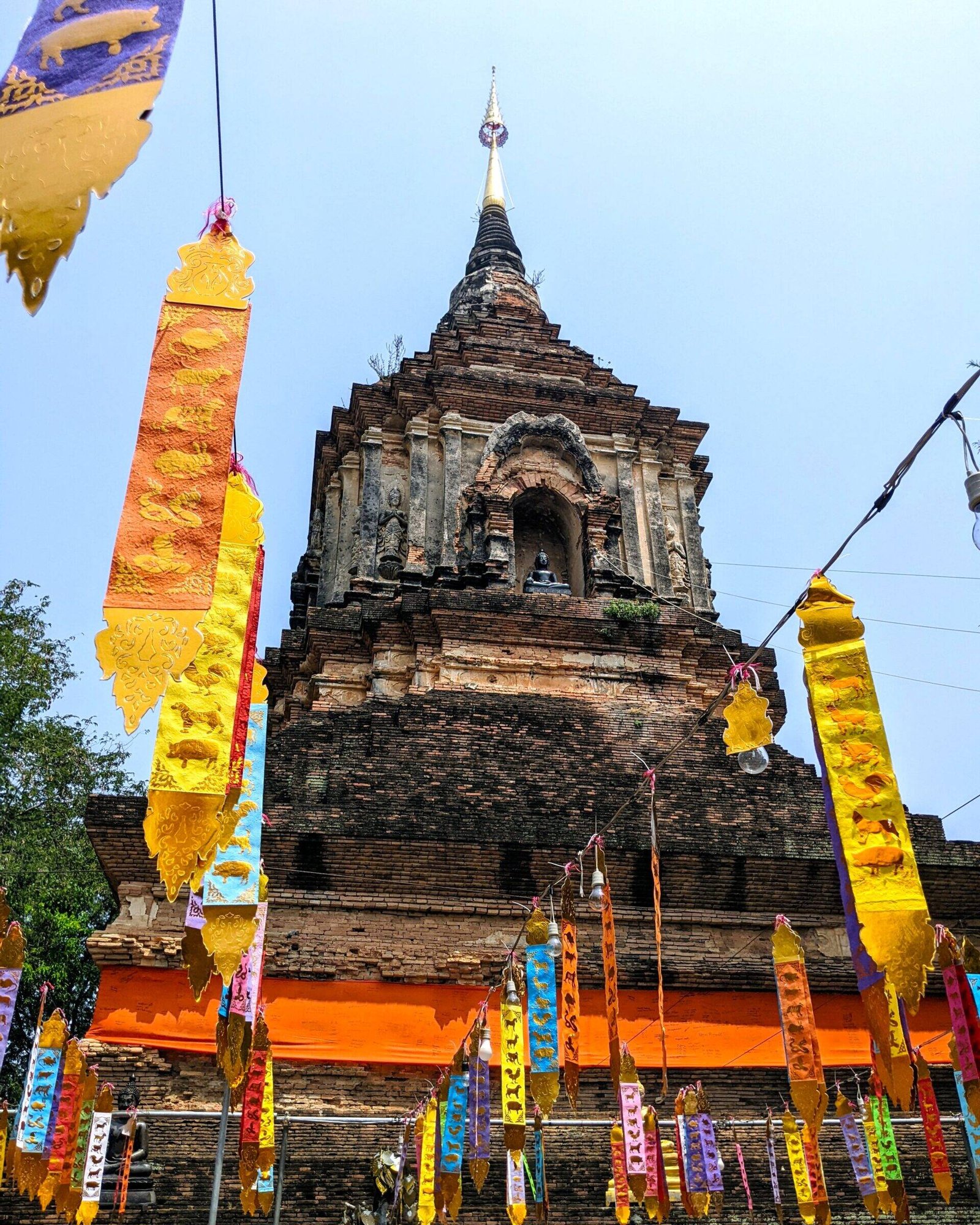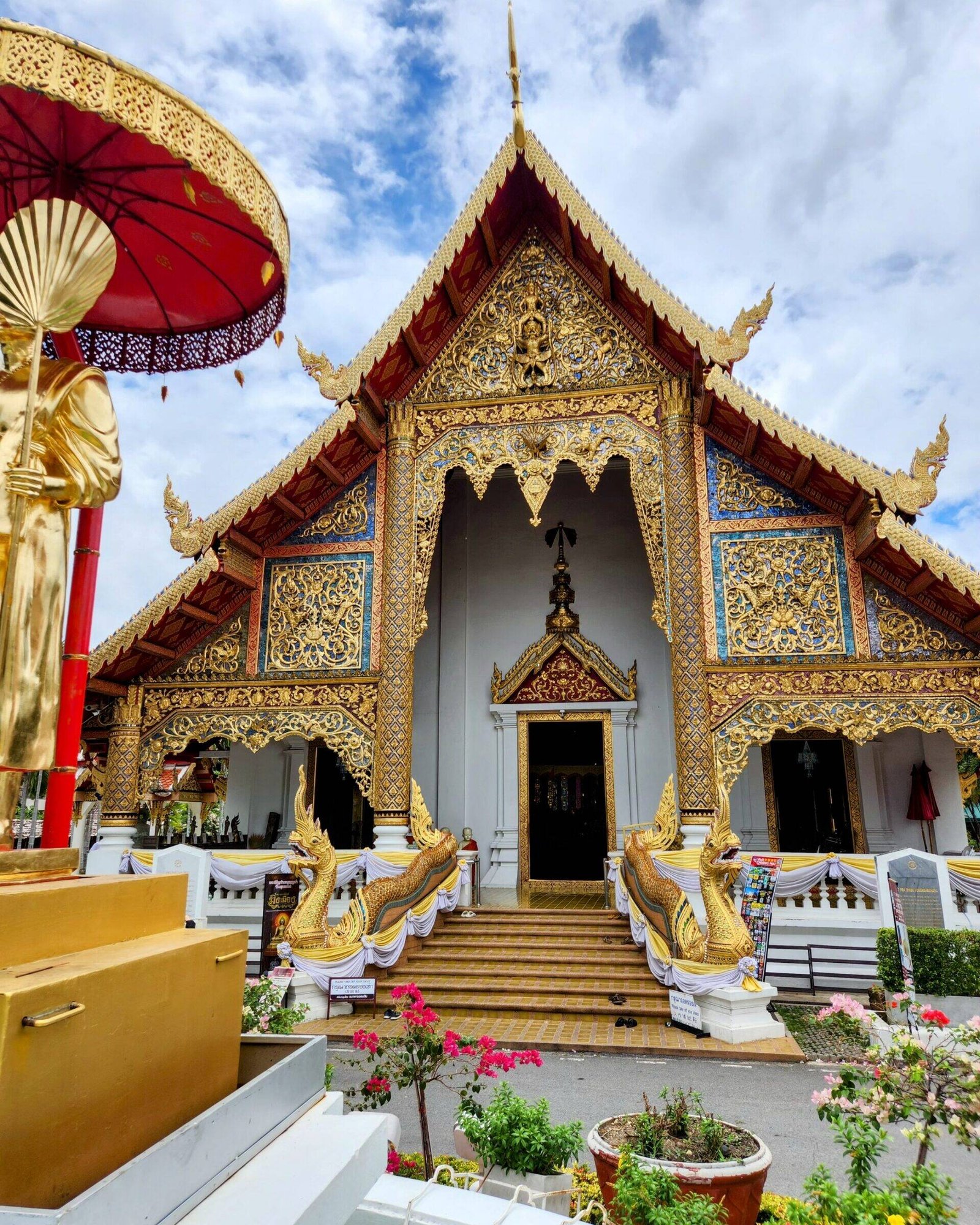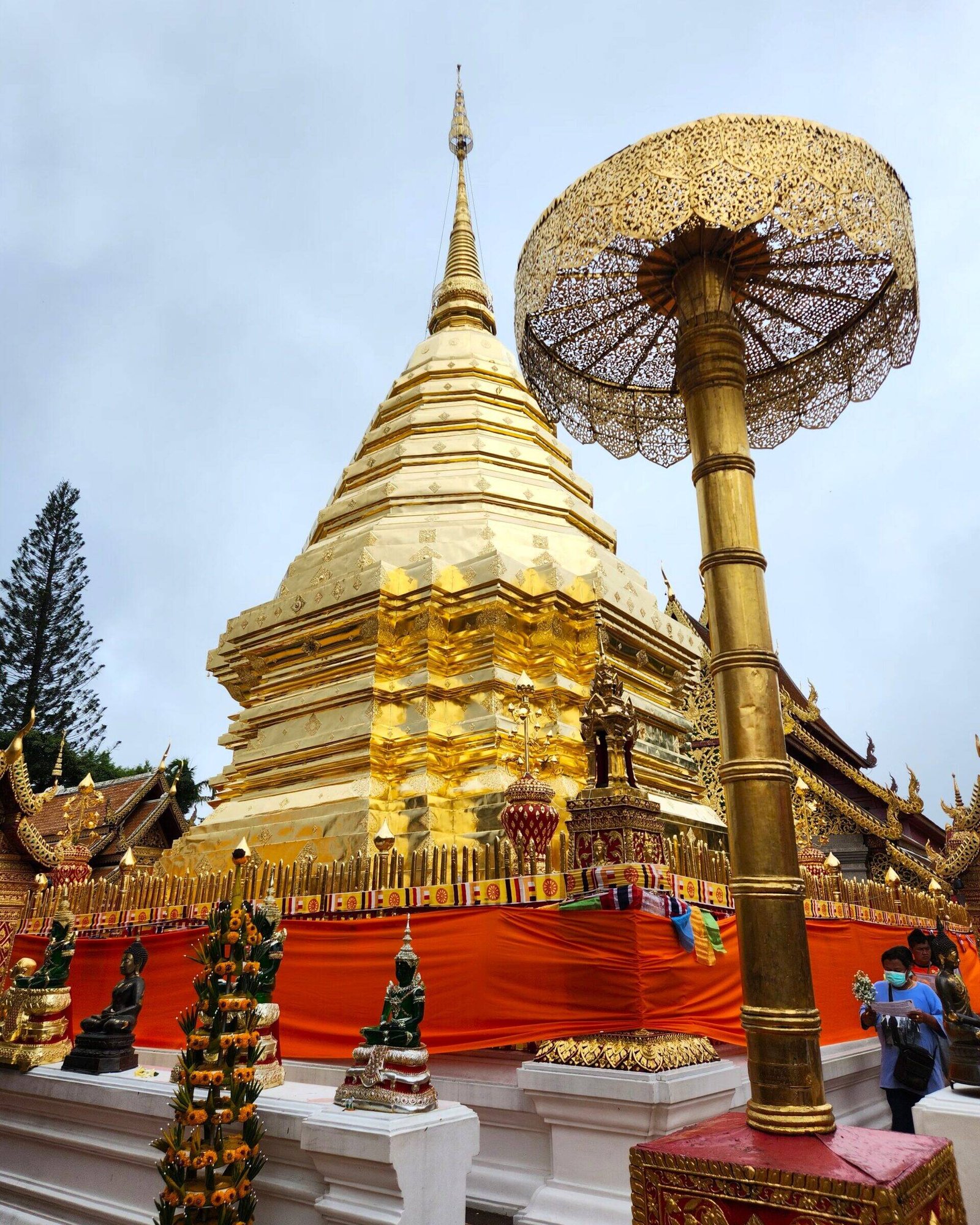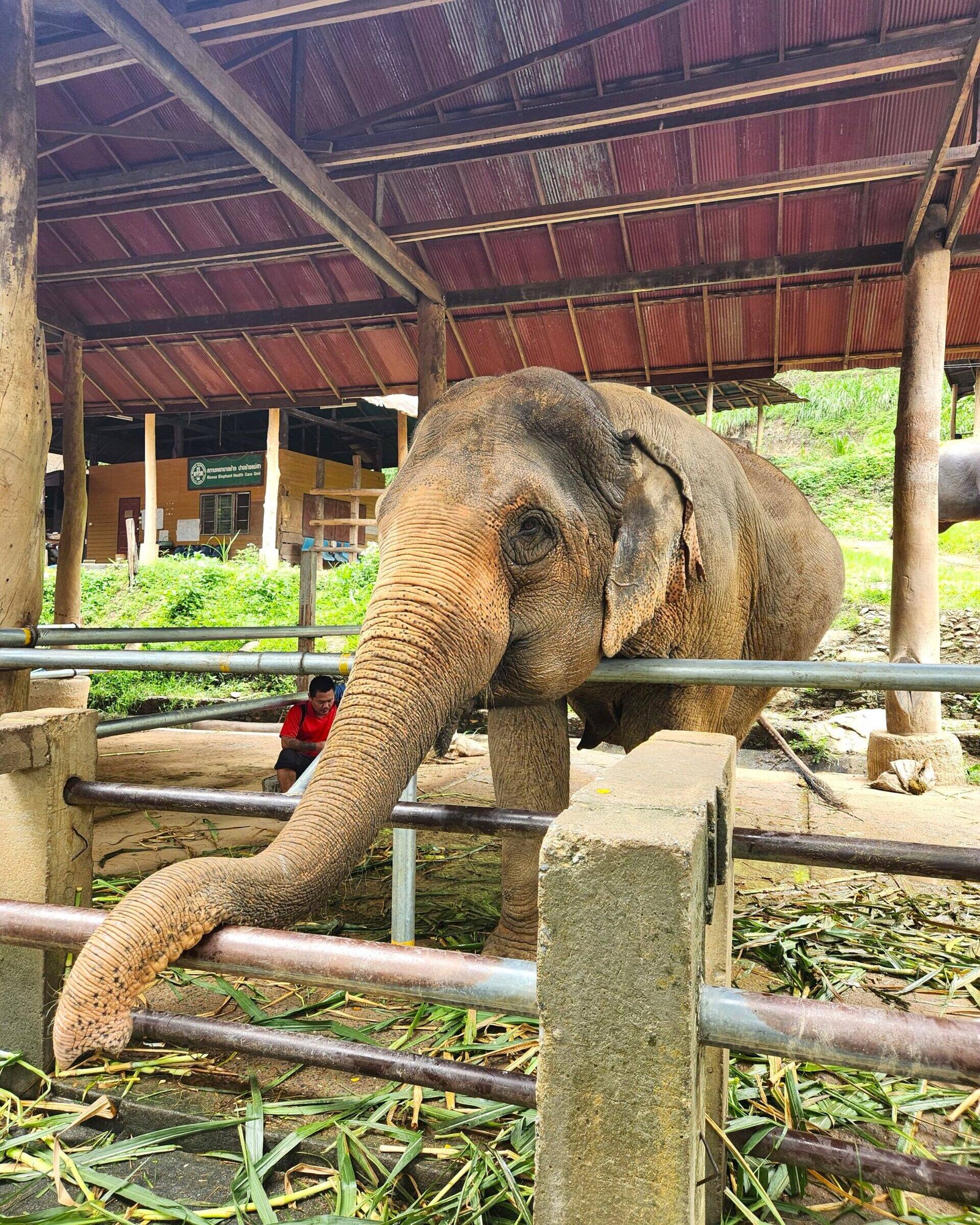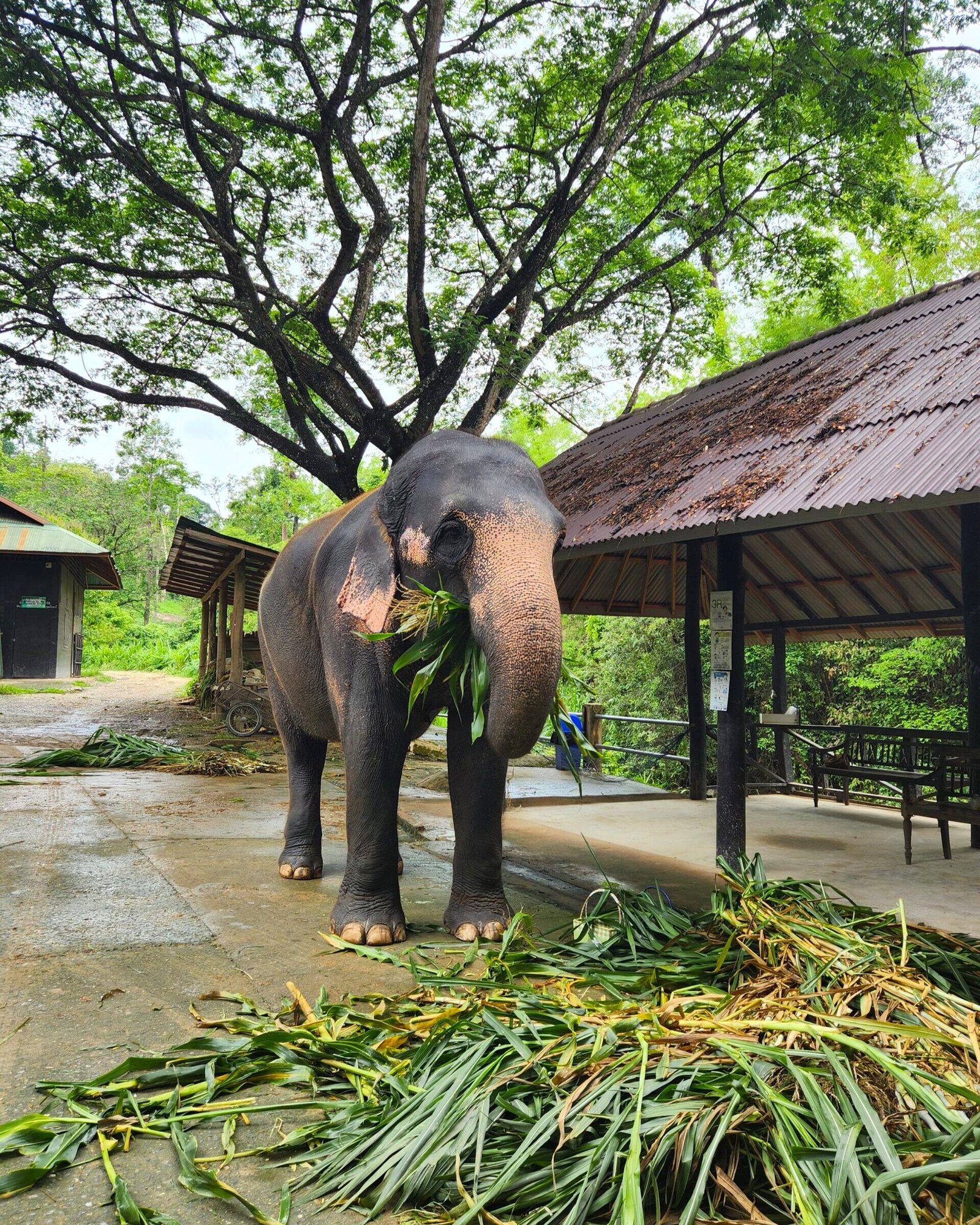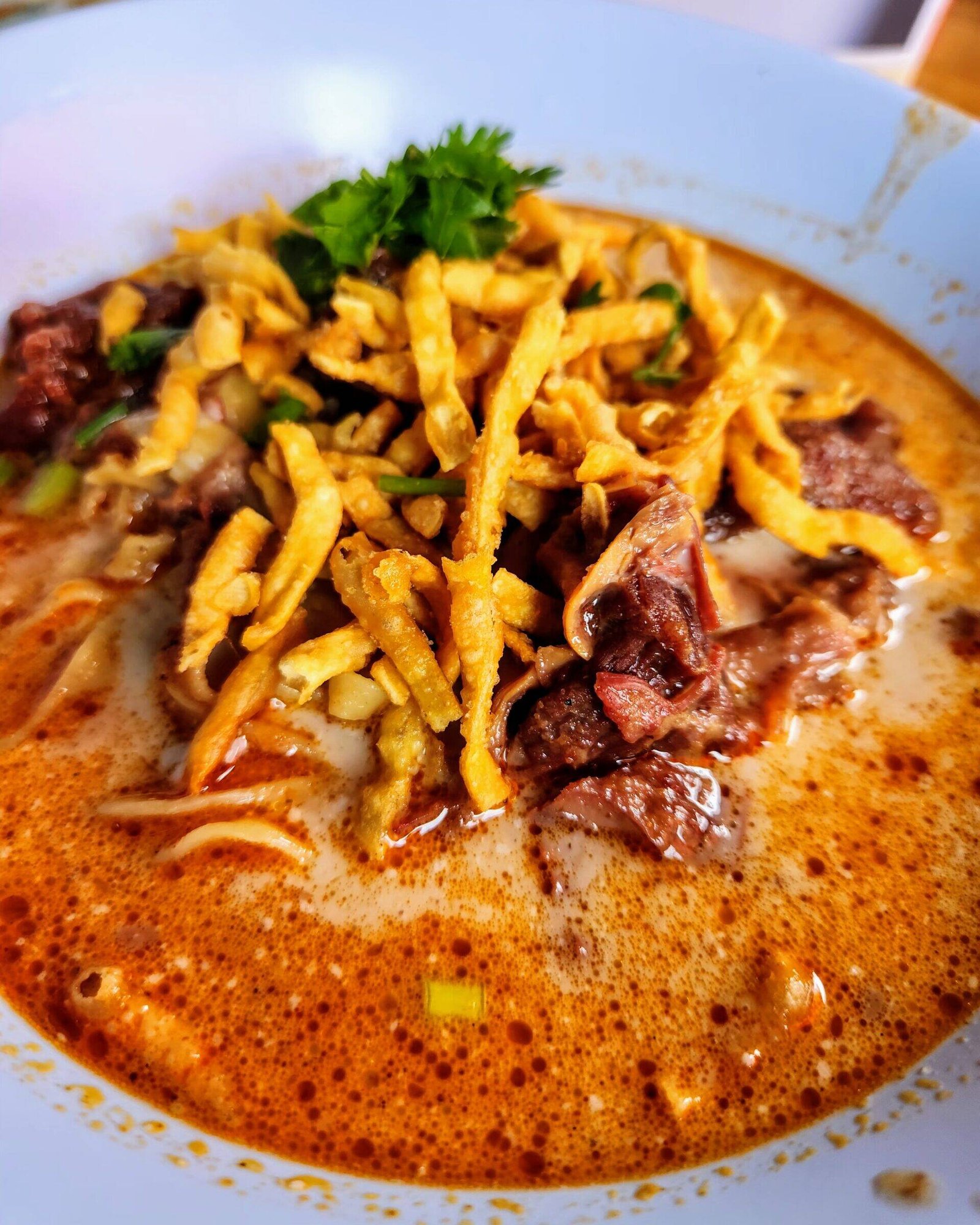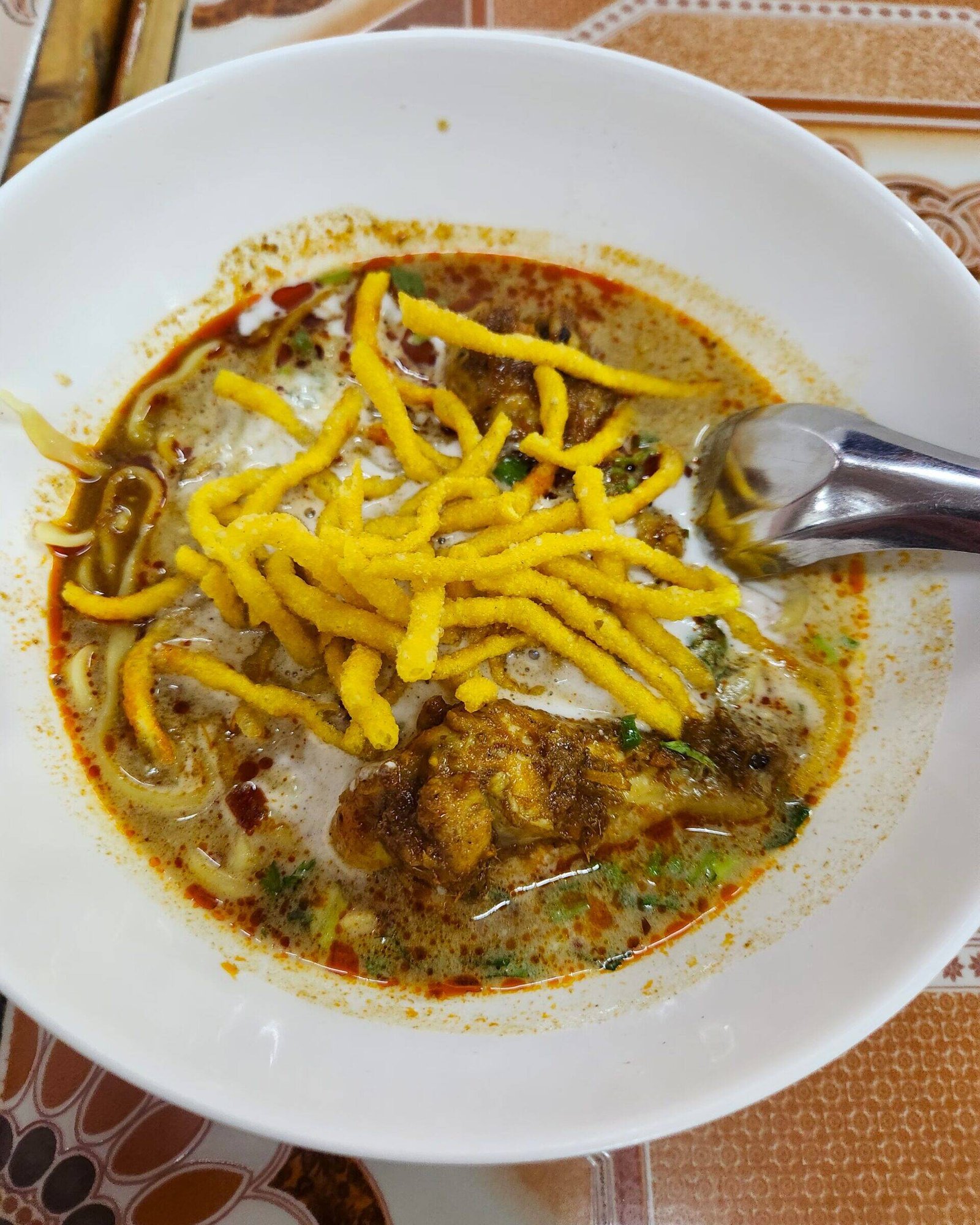Nestled in the lush hills of Northern Thailand, Chiang Mai is a city that effortlessly charms. Explore its ancient temples and bustling markets overflowing with delicious street food and unique souvenirs, all while soaking in the city’s incredibly chill vibe. In this post, we’ll show you everything you need to know to plan the perfect Chiang Mai holiday!
Chiang Mai at a glance
Country: Thailand
Population: 127,240
Language: Thai
Currency: Baht(BHT)
Best Month to Visit: December
Must See: Wat Phra Singh
Must Eat: Khao Soi

How to get to Chiang Mai
Chiang Mai offers three main ways to arrive: plane, train, and bus, each with its own set of perks and considerations.
Plane – If speed is your priority, flying is the way to go. A flight from Bangkok takes just over an hour, and with numerous daily departures, it’s incredibly convenient. Plus, with budget airlines in the mix, it can often be quite affordable. You’ll also find plenty of direct flights connecting Chiang Mai with other popular destinations across Thailand.
Train – For a more scenic and immersive journey, consider the train. The overnight routes, in particular, offer comfortable sleeper berths, potentially saving you on a night’s accommodation. It’s a cost-effective option and provides a unique glimpse into the Thai countryside. However, be prepared for a longer travel time, typically 11 to 14 hours from Bangkok. Trains depart from Bangkok’s Hua Lamphong Station. You can check schedules and book tickets on websites like 12Go or directly at the station, but for those coveted sleeper spots, booking in advance is highly recommended to guarantee your place. We also think the bottom bed is the best so you don’t have to climb up and down the ladder in the middle of the night.
Bus – Often the most budget-friendly option, taking the bus offers frequent departures, including direct services to Chiang Mai. You can even choose between different levels of comfort, with VIP buses offering extra amenities. Keep in mind though, the journey from Bangkok usually takes around 10 to 12 hours and might be less comfortable for extended periods. Buses depart from Bangkok’s Mochit Bus Terminal. Again, you can check schedules and book via platforms like 12Go or purchase tickets at the terminal. Remember to factor in travel time to and from these Bangkok bus and train stations.
Getting Around Chiang Mai
Once you’ve arrived, getting around Chiang Mai is part of the adventure! Here are your main options:
Tuk-Tuks – Tuk-tuks are a fun and iconic way to travel short distances in Chiang Mai, offering a unique open-air experience and the ability to navigate through narrow streets quickly. They are readily available in tourist areas, and fares can be negotiated. And don’t forget Tuk Tuks have limited Luggage space.
Rot Daeng – Rot Daeng’s, are the red shared taxis, they are a very affordable way to get around Chiang Mai and are popular with locals. They operate on flexible routes, picking up and dropping off passengers along the way, and can also be hired privately. However, they don’t follow fixed schedules, can be slow due to multiple stops, and may not be the most comfortable for everyone as they are shared rides.
Renting a Car or Scooter
Renting a car provides the most freedom and flexibility to explore Chiang Mai and its surroundings at your own pace, offering comfort and the ability to carry more luggage, especially over longer distances. However, it can be more expensive due to rental costs and petrol, and driving in Chiang Mai’s traffic can be hectic.
Renting a scooter is a cost-effective and convenient way to navigate the city, especially in congested areas, and allows access to more remote locations. However, it can be less suitable for long distances, offers limited luggage space, and requires caution due to traffic conditions.
For both cars and scooters, it’s essential to have the appropriate driving license (ideally an International Driving Permit), and safety should be a top priority, including wearing a helmet when riding a scooter.

Where to Stay in Chiang Mai
Where to lay your head can be one of the most important choices to make when planning your trip and Chiang Mai offers a variety of areas to stay, each with its own unique atmosphere.
The Old City – Staying within the ancient walls of Chiang Mai’s Old City immerses you in its rich history and culture. This area has loads of temples, historical sites, and is incredibly walkable, allowing easy access to attractions including the Sunday and Saturday Walking Street markets. You’ll find a range of accommodation options, from budget-friendly hostels to more upscale boutique hotels. The old town is ideal for first-time visitors and those interested in exploring the historical heart of Chiang Mai.
Nimmanhaemin – Located just west of the Old City, Nimmanhaemin is a trendy and modern neighbourhood that attracts a younger crowd, digital nomads, and Thai tourists. It’s known for its stylish cafes, hip restaurants, boutique shops, art galleries, and lively nightlife. The area boasts a more contemporary feel with modern hotels and condominiums. Nimmanhaemin offers a vibrant and convenient base with easy access to old city.
Riverside (Charoen Prathet Road Area) – For a slightly different ambiance, consider staying along the Ping River, particularly in the Charoen Prathet Road area. This location offers a more tranquil setting with a mix of upscale resorts, boutique hotels, and riverside restaurants. You can enjoy scenic views and a more relaxed pace while still being within easy reach of the city centre via a short taxi or tuk-tuk ride. This area has a more local vibe and is great for those who want to be away from the city centre and get a taste of the real Chiang Mai.
When is the Best Time to Visit Chiang Mai
The best time to visit Chiang Mai is generally from November to February. This period offers the most pleasant weather with cooler temperatures, clear skies, and low humidity, making it ideal for exploring temples and enjoying outdoor activities. However, this is also the peak tourist season, so expect higher prices and more crowds. For a balance of good weather and fewer tourists, consider the shoulder seasons of March/April or October. Avoid March if possible due to the annual “burning season” which can result in poor air quality.
Things to Do
Exploring Chiang Mai’s old city is like stepping back in time. Within its ancient walls, you’ll discover a wealth of historic temples adorned with intricate carvings and serene courtyards. Wander through narrow lanes, stumble upon charming cafes, and soak in the peaceful atmosphere. The vibrant markets also offer a taste of local life and crafts. It’s a captivating blend of history, culture, and everyday charm.
Magnificent Temples
Chiang Mai is renowned for its stunning array of temples, or “wats.” These sacred sites, ranging from ancient Lanna-style structures to more recent ornate designs. They are Scattered throughout the old city and dotting the surrounding hills here are some of the must visit temples in Chiang Mai.
Temples Inside Old City
Wat Phra Singh – Stunning and highly detailed temple with a striking golden chedi out the back.
Wat Chediluang – A 14th-century temple known for the giant partially ruined brick chedi.
Wat Lok Moli – Showcasing Lanna architecture, a large bare-brick chedi housing Mengrai Dynasty ashes, and intricate wood carvings.
Temples outside the old City
Wat Phra That Doi Suthep – Sitting atop the Doi Suthep mountan this is one of the most important and striking temples in Chiang Mai.
Wat Pha Lat – A temple set in amongst the jungle it is a peaceful place that is in harmony with its surroundings.
Wat Umong – Unique temple set in amongst the jungle that has a network of tunnels connecting different areas.
Vibrant Markets
Immerse yourself in the local culture by exploring Chiang Mai’s vibrant markets. The famous Night Bazaar buzzes every evening with a fantastic array of souvenirs, handicrafts, and mouthwatering street food. For a more authentic local experience, head to Warorot Market (Kad Luang) any day for fresh produce, local snacks, and clothing. Don’t miss the Sunday Walking Street, a must-do for unique handmade crafts and lively street entertainment, while the Saturday Market (Wua Lai) offers a similar experience with a focus on beautiful silverware. The Saturday and Sunday markets are the best and most popular and obviously you will need to time your stay for over the weekend to visit.
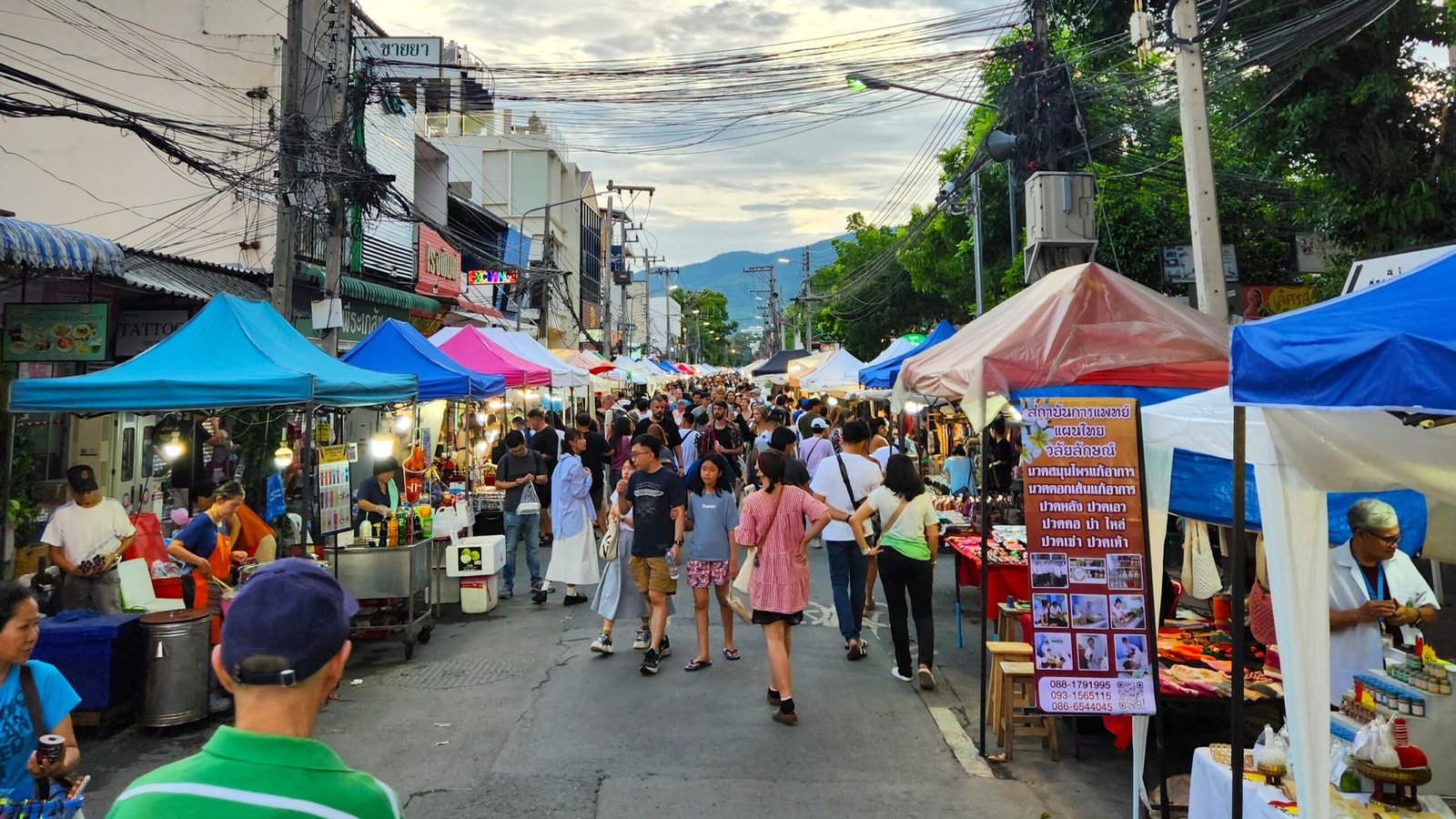
Visit an Elephant Sanctuary
Visiting an elephant sanctuary offers a memorable hands-on experience. Where you’ll get opportunity to walk alongside the elephants in their natural environment, observing their behaviour up close and even feed them. Some places offer the chance to bathe the elephants, splashing water and even covering them in mud. These experiences provide a chance to connect with these incredible animals in a safe and engaging way.
Doi Inthanon National Park
Journey to the “Roof of Thailand,” Doi Inthanon National Park, for breathtaking natural beauty. Explore misty peaks and lush tropical forests at Thailand’s highest point. Hike scenic trails like the Kew Mae Pan Nature Trail for incredible panoramic views (a local guide is required from November to May). Discover majestic waterfalls such as Wachirathan Falls and visit the striking Royal Twin Pagodas for breathtaking vistas.. The park enjoys a cool climate year-round, and you can even drive right up to the summit, Thailand’s highest point. An entrance fee applies.
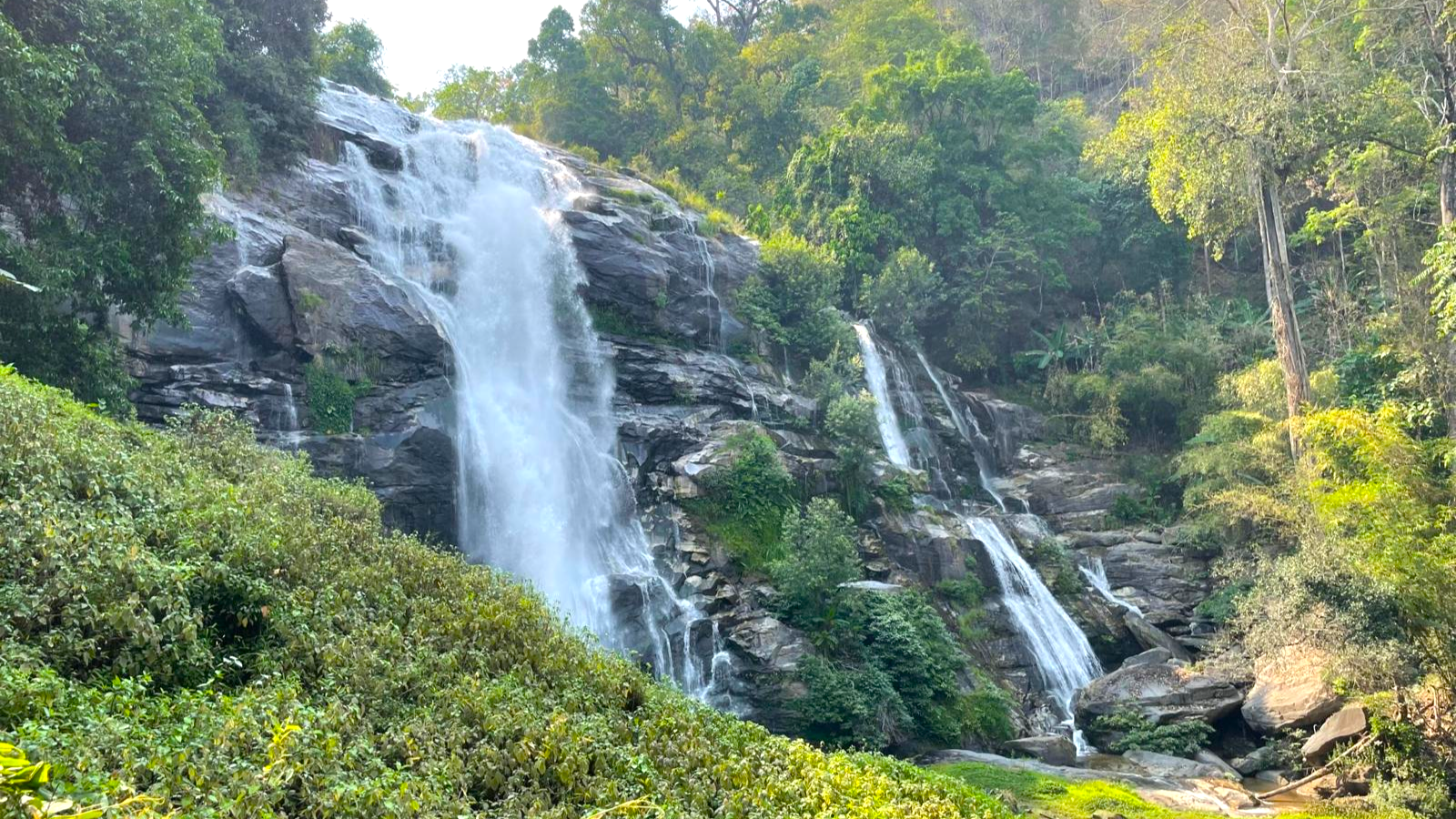
Beyond Chiang Mai
Venturing into the misty hills around Chiang Mai unveils a tapestry of natural beauty and cultural richness. Mae Kampong offers rural charm, while Chiang Dao mountain boasts stunning views and caves. Immersing oneself in the villages of the hill tribes provides profound insight into their unique customs and vibrant way of life, offering a truly enriching experience beyond the city.
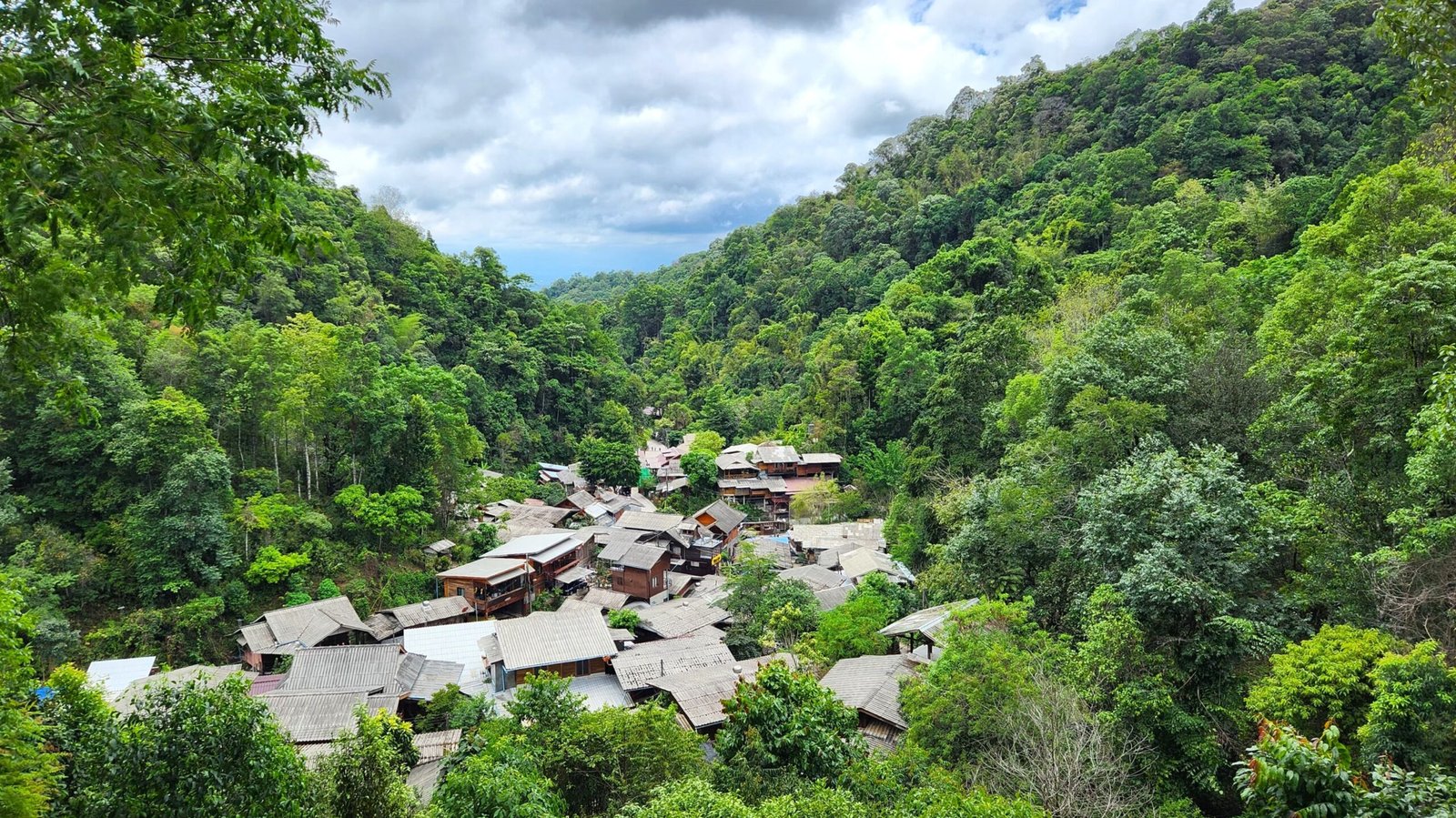
Things to Eat
Northern Thai, cuisine offers a delightful departure from other Thai regions, with a milder, more herbal, and earthy flavour profile. Sticky rice is a staple, often enjoyed with your hands. Be sure to try iconic dishes like Khao Soi and Sai Ua, both showcasing unique local herbs and often featuring grilled or slow-cooked meats. It’s a truly unique and flavourful taste of Northern Thailand’s rich culture.
Khao Soi
This Northern Thai noodle curry is an absolute must-try in Chiang Mai! This rich and creamy coconut curry broth is served with both soft and crispy egg noodles and your choice of meat, typically chicken or beef. Topped with pickled mustard greens, shallots, and vibrant chili oil, it’s an incredible explosion of textures and flavours – sweet, savoury, and just a little bit spicy. Prepare for a truly unique and satisfying culinary experience!
For some fantastic Khao Soi, check out local favourites like Lung Prakit, Khun Yai and Sa Mer Jai. All marked on the map above!
Sai Ua
This flavourful and aromatic Northern Thai sausage is a real treat! Made with ground pork, fragrant herbs like lemongrass and galangal, and a blend of local spices including chili, it boasts a distinctive taste that’s both savoury and slightly spicy. Often grilled and served in coils, it’s a popular snack at markets and a delicious addition to any Northern Thai meal. You can also find a mushroom version for a delicious meat free alternative!
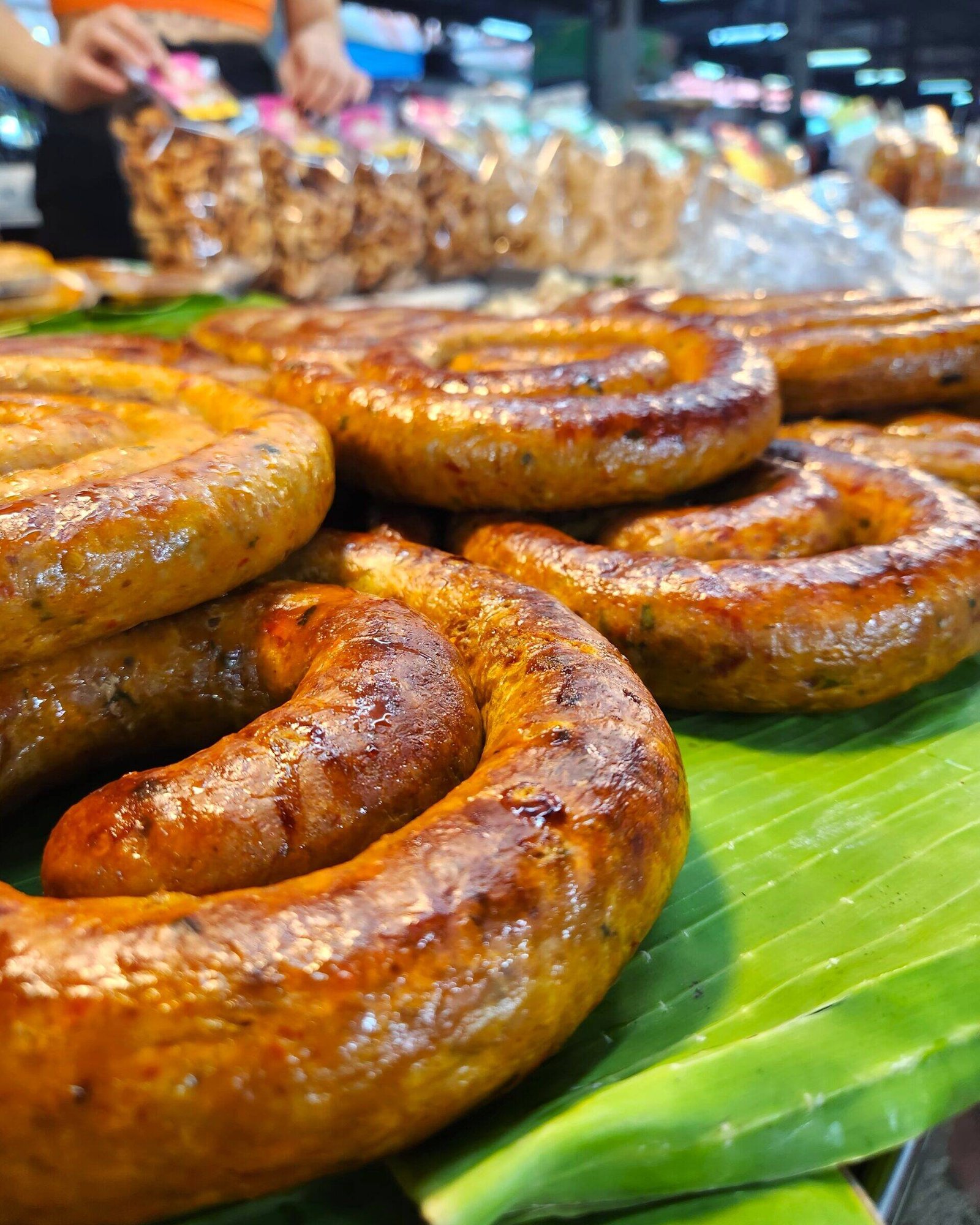
Kap Moo
Kap moo, a popular northern Thai snack, is essentially crispy pork rinds. Made by deep-frying pork skin with a layer of fat attached, it results in a light, airy, and incredibly crunchy treat. Often seasoned with a touch of salt, kap moo is enjoyed on its own as a savoury snack or used as a crispy topping for various northern Thai dishes adding a delightful textural contrast. You’ll find it readily available in markets and as a tasty souvenir.
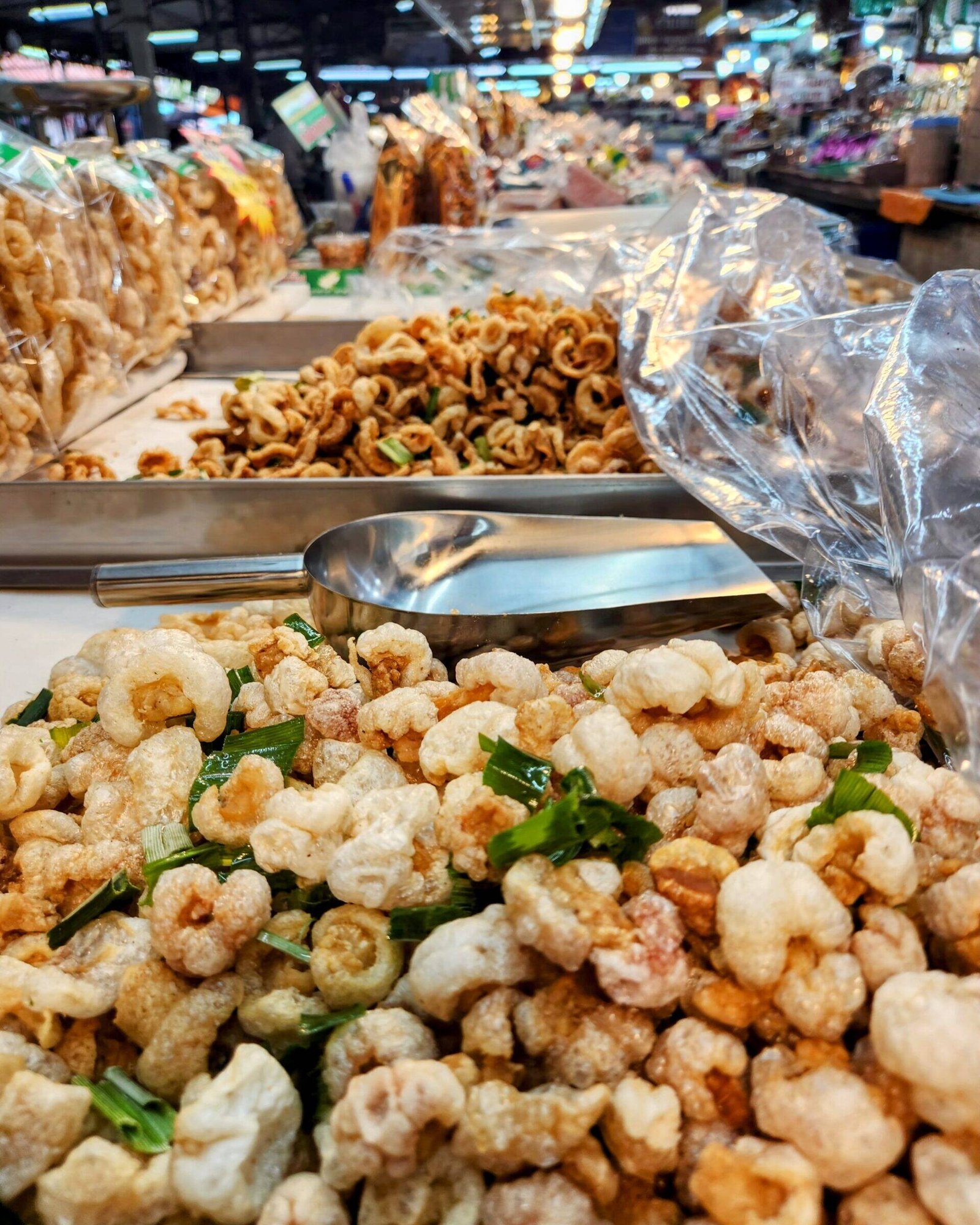
Thriving Coffee Scene
Chiang Mai boasts a vibrant and passionate coffee culture, fueled by high-quality Arabica beans grown in the surrounding hills. You’ll discover a diverse range of cafes, from trendy minimalist spaces serving expertly brewed single-origins to cozy local spots with a more relaxed atmosphere. Expect exceptional espresso drinks, innovative coffee creations, and a deep appreciation for the entire coffee-making process, from bean to cup. If you are not into coffee the shops will normally serve the standard Thai style iced drinks perfect to coll off on a hot day.
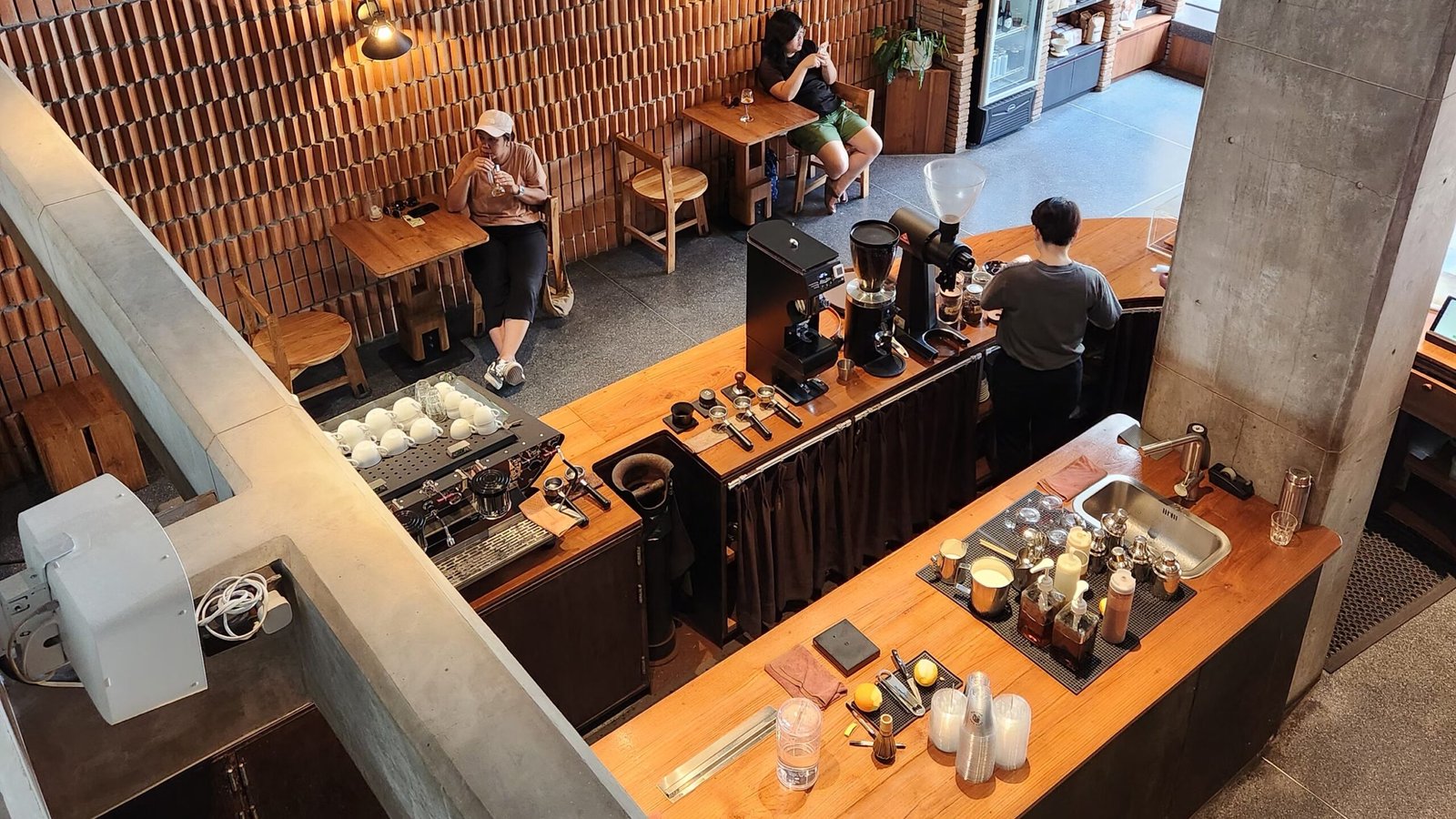
Ton Phayom Fresh Market
Explore the Ton Phayom Fresh Market here you can find a fantastic array of local specialties like Sai Ua, Nam Prik (chili dips), Kap Moo, and much more!
Jok Ton Payom
For a classic local breakfast, head to Jok Ton Payom, a long-standing favourite known for its delicious and affordable rice porridge, especially their highly praised pork Jok with egg. Located near the market, it’s a convenient and tasty stop. They also offer other dishes like dim sum and Pa ton ko (fried dough sticks) with pandan custard absolutely delish!
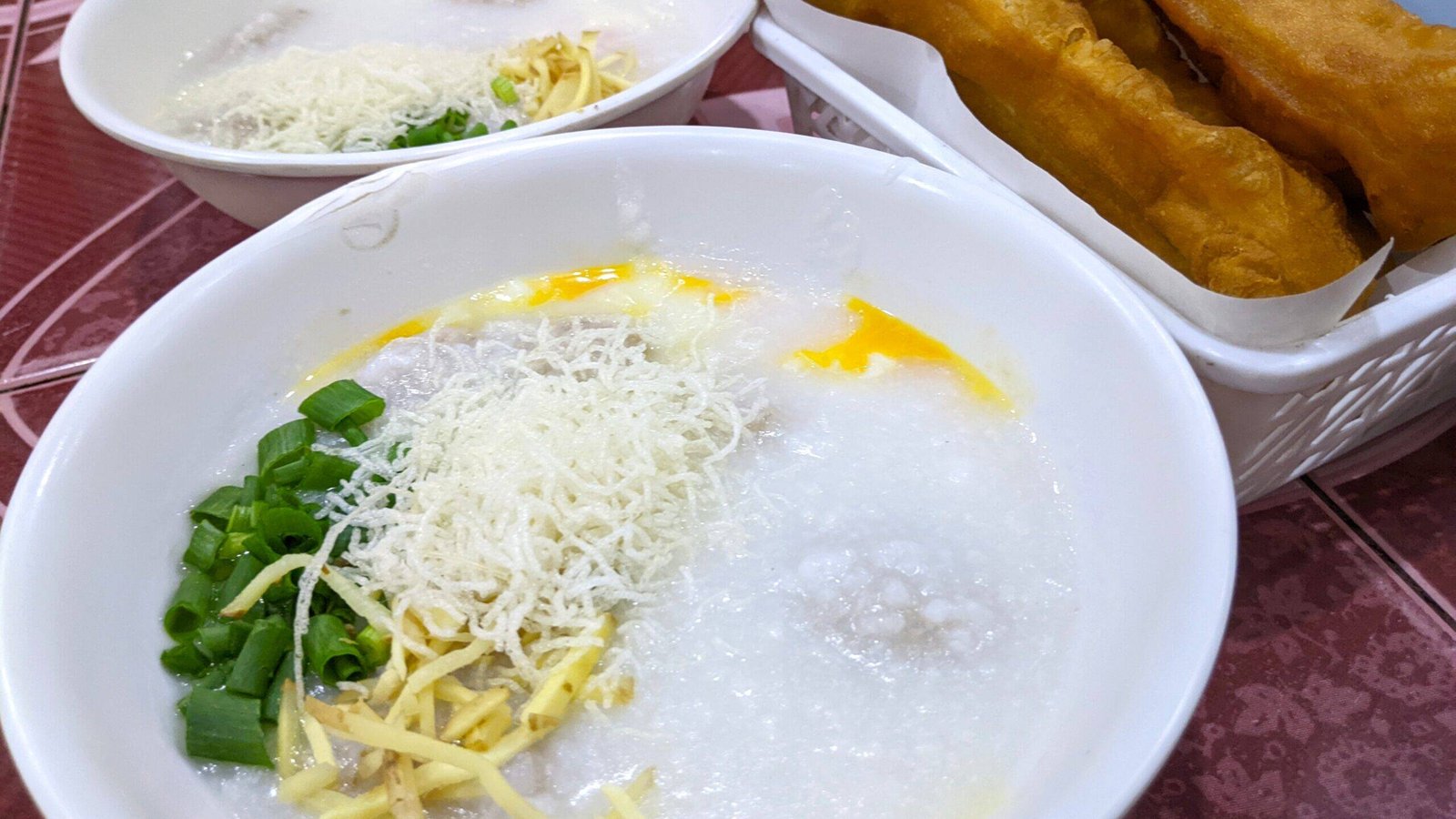
Uncle Lam
For a local experience in the old part of the city, try Uncle Lam, a popular no-frills restaurant open late, known for its casual atmosphere and delicious, mild Khao Soi with chili paste on the side. Uncle Lam is not going to win any Michelin stars anytime soon but it is a good, cheap, no frill local eatery.
Beer Lab
Nice little trendy bar in Nimmanhaemin that has a large selection of Thai craft beers as well as a selection of European beers. Prices are on the expensive side but if you are after something a little nicer than your regular tourist bars this is the place to come.

Next Stop:
- Mae Kampong: Escape to the hills near Chiang Mai
- Ayutthaya: Discover Thailand’s Ancient Capital
- Chachoengsao: Thailand’s most underrated province!
Also check out our YouTube video below 👇

